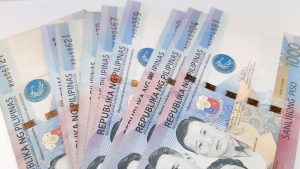




Philippines Trade Update: Trade trajectories trend along
 DOWNLOAD
DOWNLOAD

Policy Rate Updates: Double cut finale
 DOWNLOAD
DOWNLOAD

Monthly Economic Update: One for the road
 DOWNLOAD
DOWNLOAD


NPL ratio inches up to 5-month high in Oct.

The Philippine banking industry’s nonperforming loan (NPL) ratio rose to the highest in five months in October, as soured loans increased due to high borrowing costs.
Preliminary data from the Bangko Sentral ng Pilipinas (BSP) showed the banking industry’s gross NPL ratio inched up to 3.44% in October from 3.4% in the previous month and 3.41% a year ago.
This was also the highest bad loan ratio since 3.46% in May.
Bad loans increased by 9.2% to PHP 449.435 billion from PHP 411.632 billion a year earlier.
Month on month, it inched up by 1.2% from PHP 444.313 billion in September.
Loans are considered nonperforming once they remain unpaid for at least 90 days after the due date. They are deemed as risk assets given borrowers are unlikely to settle such loans.
Rizal Commercial Banking Corp. Chief Economist Michael L. Ricafort said the uptick in bad loans and the NPL ratio was largely due to rising interest rates.
“Policy rate hikes since last year due to higher prices increased the costs and narrowed the profit margins of some borrowers, somewhat reducing the profitability and the ability of some borrowers to pay, partly leading to some pickup in bad loans,” he said.
In an off-cycle move in October, the Bangko Sentral ng Pilipinas (BSP) raised borrowing costs by 25 basis points (bps), bringing the key rate to a 16-year high of 6.5%.
Since May 2022, the central bank has raised the benchmark rate by a total of 450 bps to tame inflation.
“NPLs remain elevated because income is not yet catching up with high interest rates. The cost of borrowing remains high creating difficulties in repaying debts,” John Paolo R. Rivera, president and chief economist at Oikonomia Advisory & Research, Inc., said in a Viber message.
BSP data showed past due loans rose by 14.4% to PHP 557.083 billion in October from a year earlier. This brought the ratio to 4.26%, up from 4.03% in 2022.
On the other hand, restructured loans dropped by 5.5% to PHP 309.239 billion from PHP 327.355 billion a year ago. These borrowings made up 2.37% of the industry’s total loan portfolio, slightly lower than 2.71% in the previous year.
Banks continued to beef up loan loss reserves, which climbed by 7.4% to PHP 461.085 billion. This brought the loan loss reserve ratio to 3.53%, down from 3.56% last year.
Lenders’ NPL coverage ratio, which gauges the allowance for potential losses due to bad loans, edged lower to 102.59% from 104.27% a year ago.
Mr. Ricafort said a possible slowdown in the United States, China and other major economies could affect the Philippine economy.
“Slower global economic growth would also result in some slowdown in local business and other economic activities in terms of slower sales, earnings, employment and the ability to pay by some borrowers,” he said. — By Luisa Maria Jacinta C. Jocson, Reporter
This article originally appeared on bworldonline.com





 By BusinessWorld
By BusinessWorld